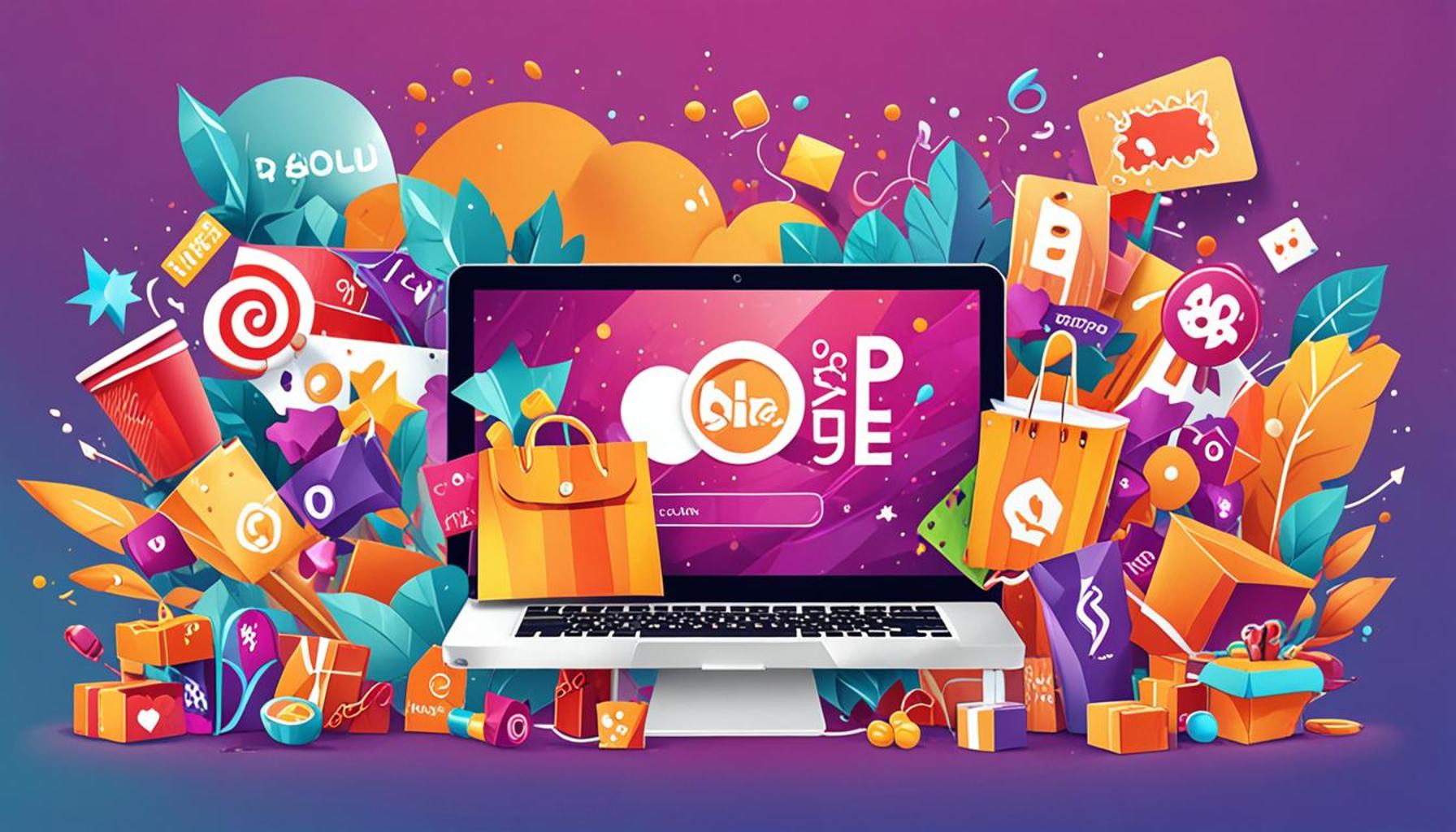The Influence of Promotion Policies in Digital Marketing Campaigns

Understanding Promotion Policies in Modern Marketing
In the fast-evolving world of digital marketing, promotion policies serve as a crucial foundation for successful campaigns. These policies not only guide strategic marketing decisions but also significantly impact consumer behavior and brand perception. As companies adapt to the rise of digital platforms, understanding the effectiveness of their promotional strategies has never been more essential. A well-crafted promotion policy helps marketers identify their target audience, select the right channels, and determine the best timing for their campaigns.
Promotional strategies can enhance visibility and drive engagement through various channels. Key elements include:
- Social Media Advertising: Platforms like Facebook, Instagram, and TikTok allow brands to target specific demographics with precision. This targeted approach ensures that advertisements reach users who are more likely to engage with the content. For example, a cosmetic brand might use Instagram ads to showcase a new product line specifically to women aged 18-34, utilizing features like influencer endorsements and user-generated content to increase authenticity.
- Email Marketing: Personalized communication not only helps to convert leads into loyal customers but also fosters ongoing relationships. By segmenting email lists, companies can tailor their messages. For instance, a retail company can send exclusive discounts to first-time buyers while providing product recommendations to repeat customers based on purchase history. According to a study, personalized emails deliver six times higher transaction rates, showcasing the potential of this marketing strategy.
- Influencer Partnerships: Collaborating with influencers, who have established trust and credibility among their followers, can propel a brand’s visibility. In the United States, influencer marketing has become a billion-dollar industry, with brands partnering with figures on platforms like YouTube and Instagram to reach niche audiences. For instance, a fitness apparel brand may collaborate with a popular fitness influencer to promote its products through engaging content and live demonstrations.
Understanding the influence of these policies can lead to effective campaign execution and higher ROI. Companies that adeptly implement promotional tactics often witness:
- Improved Customer Engagement: Tailored content that resonates with audiences can significantly increase interaction rates. A personalized approach allows brands to connect on a deeper level with their customers, which enhances satisfaction and loyalty.
- Increased Brand Loyalty: Consistent messaging across various platforms builds trust, encouraging repeat business. As companies evolve their promotional strategies to emphasize transparency and social responsibility, they can foster a loyal community around their brand.
- Enhanced Competitive Edge: Innovative approaches that provide value to consumers can help brands stand out. Companies that leverage creative storytelling or interactive experiences in their campaigns not only attract attention but also deepen their audience’s connection to the brand.
With the right promotion policies, businesses can navigate the complexities of digital landscapes. As we delve deeper into this topic, it becomes clear how these policies shape the effectiveness of marketing initiatives, driving both brand success and consumer satisfaction. In an age where consumers are bombarded with constant information, strategic promotion policies are indispensable tools that help organizations engage effectively, thereby transforming potential buyers into devoted customers.
SEE ALSO: Click here to read another article
The Role of Targeting in Promotion Policies
One of the most significant aspects of promotion policies in digital marketing is the ability to target specific consumer segments effectively. In an era defined by information overload, brands must employ strategic targeting to ensure their messages resonate with the right audiences. By leveraging data analytics and audience insights, marketers can tailor their promotional efforts to maximize impact and conversion rates.
Promotional campaigns that utilize data-driven targeting not only optimize advertising spend but also enhance the relevance of the message delivered. For instance, a regional grocery chain may analyze local shopping trends to create personalized promotions that cater to specific customer preferences, such as discounts on organic produce or gluten-free products. By understanding what their consumers want, brands can foster stronger connections and drive sales.
Key strategies for effective targeting include:
- Demographic Targeting: Identifying consumer segments based on age, gender, and income allows companies to tailor their messaging. For instance, a luxury car brand might focus on higher-income individuals aged 30-55, ensuring their promotional content aligns with these consumers’ lifestyles and expectations.
- Behavioral Targeting: Understanding the online behavior of consumers—such as sites visited, products viewed, and past purchases—enables brands to create campaigns that cater to specific interests. A travel agency could target users who have recently searched for vacation packages, customizing ads that feature appealing destinations.
- Geographic Targeting: Using location data helps companies deliver localized promotions that speak to communities. A local restaurant can increase foot traffic by advertising special weekend offers or events specific to its neighborhood, instilling a sense of community appreciation.
Incorporating these targeting elements into promotion policies can lead to higher engagement rates and more successful outcomes for campaigns. According to research, targeted ads can have an average CTR (click-through rate) of 2-5 times higher compared to generic advertisements. This is an imperative notion in the competitive landscape of digital marketing, where the cost of reaching potential customers can significantly impact overall success.
Moreover, businesses that prioritize segmentation and targeted promotion often report more robust customer relationships. By delivering relevant messages and value-based content, brands can see enhanced customer satisfaction and loyalty. Engaging consumers on a personal level not only encourages them to make purchases but also positions the brand as being attuned to their unique needs.
As we explore the critical intersection of promotion policies and digital marketing effectiveness, it becomes evident that understanding consumer behavior and implementing targeted strategies are key drivers behind successful campaigns. In the relentless pursuit of consumer attention, companies must remain adaptable, ready to redefine their approach based on evolving market demands and consumer preferences, ensuring that their promotional efforts do not merely capture eyes, but also resonate with hearts.
| Promotion Policy Impact | Key Advantages |
|---|---|
| Enhanced Targeting | Promotion policies help brands define and refine their target audience using data-driven insights. |
| Increased Engagement | Promotional strategies lead to improved consumer interaction through compelling content and offers. |
Digital marketing campaigns increasingly rely on effective promotion policies to drive results. One significant impact of these policies is enhanced targeting. By leveraging data and analytics, brands can vastly improve their understanding of consumer behavior. This insight fuels more tailored marketing strategies that resonate with specific demographics, ensuring that promotions are not merely broadly cast but strategically focused.Moreover, as promotional policies evolve, they facilitate greater engagement with the audience. Campaigns that employ visually appealing and relatable content are more likely to capture attention and spark interaction among potential customers. This dual effect of improving targeting and enhancing engagement truly reflects the influence of promotion policies on digital marketing campaigns.By focusing on these aspects, businesses can create powerful marketing strategies that not only drive sales but also foster brand loyalty, ultimately leading to a more robust market presence. The intersection of promotion policies and digital marketing is a fertile ground for exploration and discovery, urging marketers to rethink their approaches.
SEE ALSO: Click here to read another article
Measurement and Analysis: Fine-Tuning Promotion Policies
To truly harness the influence of promotion policies in digital marketing campaigns, businesses must embrace the power of measurement and analysis. Metrics serve as the guiding compass, providing insights into campaign performance and enabling marketers to make informed decisions. The digital landscape is replete with tools that offer valuable data on consumer interaction, which can illuminate how effective various promotional strategies are in achieving desired outcomes.
Key performance indicators (KPIs) such as conversion rates, return on investment (ROI), and customer lifetime value (CLV) allow brands to gauge the effectiveness of their promotional efforts comprehensively. For example, a fashion retailer might analyze its promotional emails’ open and click-through rates to determine which offers resonate best with its audience. This data can lead to adjustments in future campaigns, optimizing content and timing to drive better results.
Moreover, A/B testing can be a game-changer in this realm, providing a systematic approach to tweaking promotional elements. By comparing different versions of messaging, visuals, or calls to action, marketers can identify what captivates their audience’s attention. An online software company might test two variations of an ad: one featuring a significant discount versus another emphasizing exclusive access to premium features. Such granular insights can define a campaign’s success and influence overall promotional policy direction.
The emphasis on analytics can significantly shape a company’s promotional strategies, leading to refined consumer segmentation and targeting efforts. For example, a telecommunications provider implementing data analysis might unveil that younger consumers are more responsive to social media promotions rather than email campaigns. Knowing this, the company can allocate resources effectively, investing heavily in Instagram ads targeted at millennials while downgrading less impactful channels.
Beyond traditional metrics, the rise of customer sentiment analysis and social listening tools allows brands to gauge public perception and reaction in real-time. Understanding how customers feel about promotional offers can provide additional context to quantitative metrics. A recent survey found that 76% of consumers appreciate brands that listen and adapt based on feedback. A restaurant chain may use sentiment analysis tools to adjust its promotional strategy based on customer comments regarding a new menu item, ensuring that promotions reflect not just sales data but also customer preferences.
Furthermore, the integration of advanced technologies such as artificial intelligence (AI) and machine learning can automate and enhance measurement processes. These technologies can analyze vast amounts of data with unprecedented speed, offering actionable insights that would be impractical to obtain manually. With AI-driven tools, a retail brand can predict upcoming trends based on historical data, allowing for proactive rather than reactive marketing strategies.
As businesses become more comfortable with data-driven marketing, the ability to refine promotion policies and strategies continuously will become vital. This ongoing adjustment is crucial in achieving a competitive edge in increasingly saturated markets. As such, the cycle of testing, analyzing, and adapting promotional efforts based on precise data will ultimately determine how effectively a brand captures and retains consumer attention in the dynamic world of digital marketing.
SEE ALSO: Click here to read another article
Conclusion: Adapting to the Digital Era’s Promotional Landscape
As we have explored, the influence of promotion policies in digital marketing campaigns is profound and multifaceted. In today’s fast-paced digital environment, businesses must recognize that successful marketing extends far beyond simply crafting attractive offers; it necessitates a strategic integration of data-driven insights and continuous adaptation. With the increasing complexity of consumer behavior, fueled by technological advancements and shifting preferences, the ability to engage in real-time analysis of promotional initiatives is essential.
Innovative strategies such as A/B testing and sentiment analysis empower brands to not only measure effectiveness but also anticipate trends and consumer desires. By harnessing the power of analytics, marketers can achieve exceptional levels of precision in targeting their audiences, ensuring that promotional efforts resonate deeply with potential customers. For instance, companies that invest in understanding their target demographic—whether through social media engagement or personalized email campaigns—stand at a distinct advantage as they fine-tune their promotional policies.
Moreover, as businesses navigate this ever-evolving digital landscape, they must remain agile, continuously adapting their promotion policies based on clear metrics and insights. The incorporation of AI and machine learning technologies offers unparalleled opportunities to streamline these processes, revealing insights that can drive ROI to unprecedented heights. Ultimately, brands that combine creativity with analytical rigor will not only captivate their audiences but also significantly enhance their market positioning.
In conclusion, the future of digital marketing campaigns will hinge on the adeptness of businesses in harnessing the influence of promotion policies. By embracing change and prioritizing data-driven decision-making, brands can effectively cultivate lasting consumer relationships and ensure ongoing success in an increasingly competitive market landscape.



